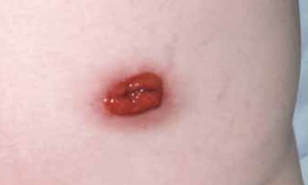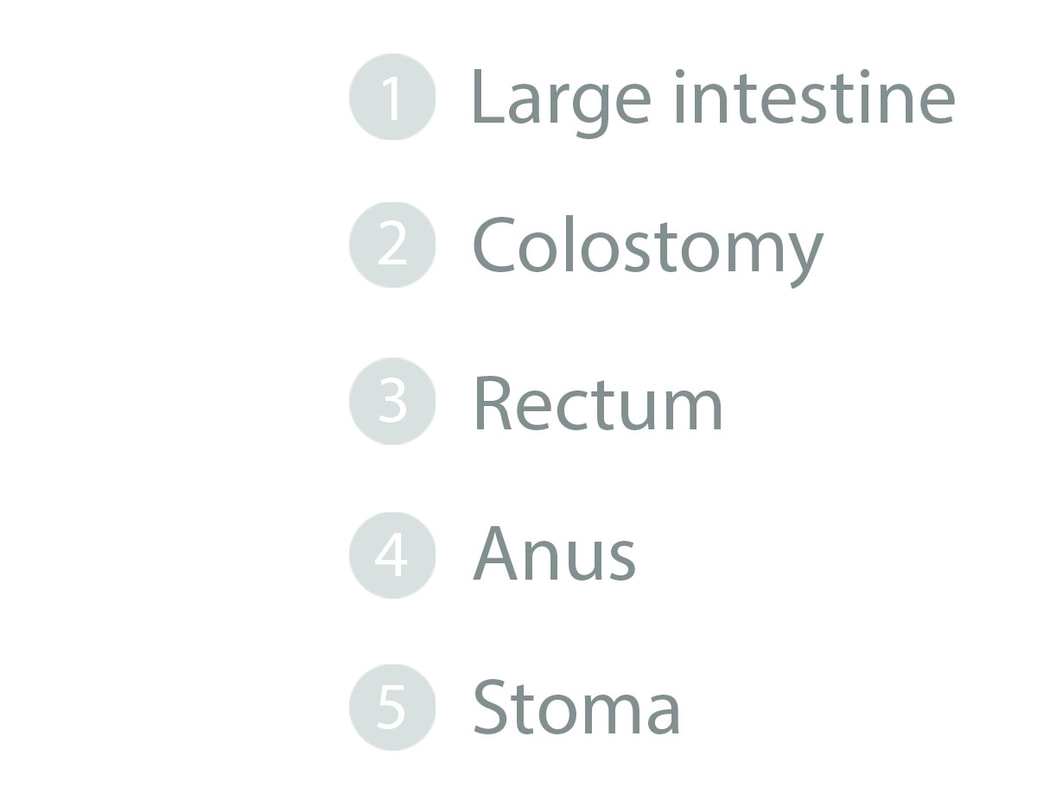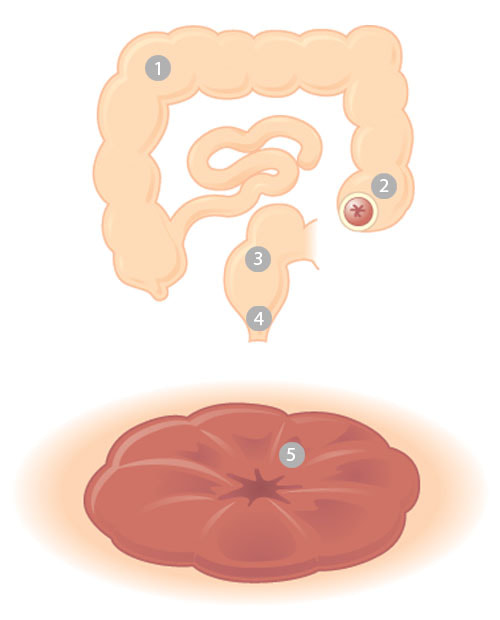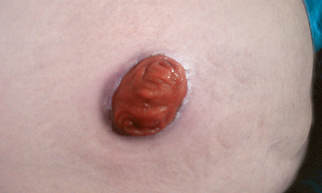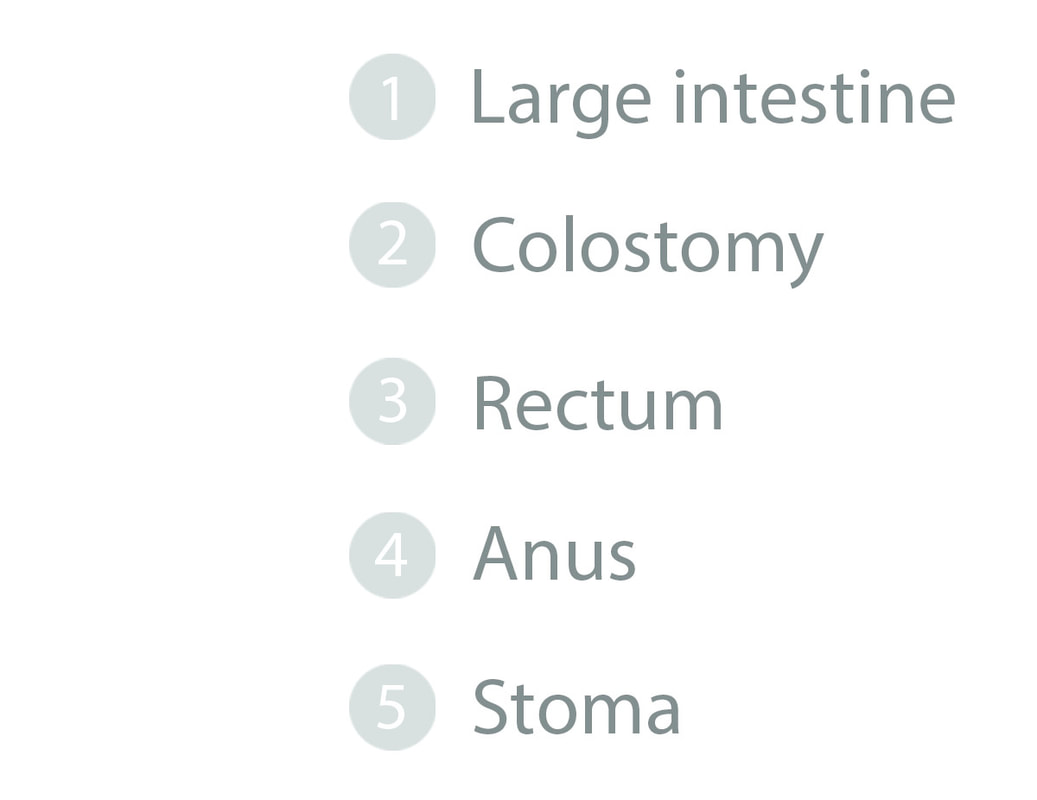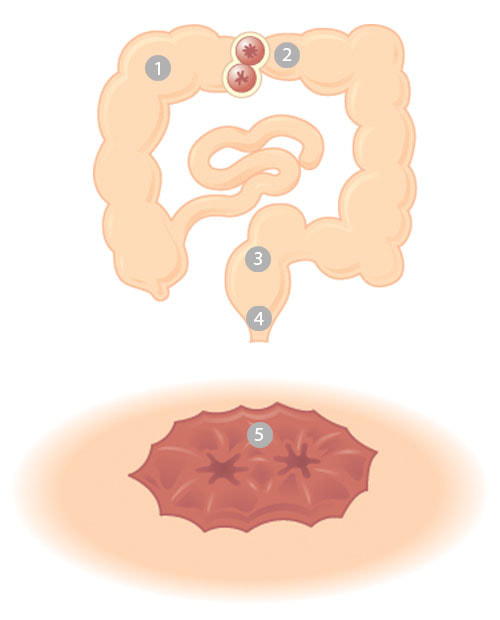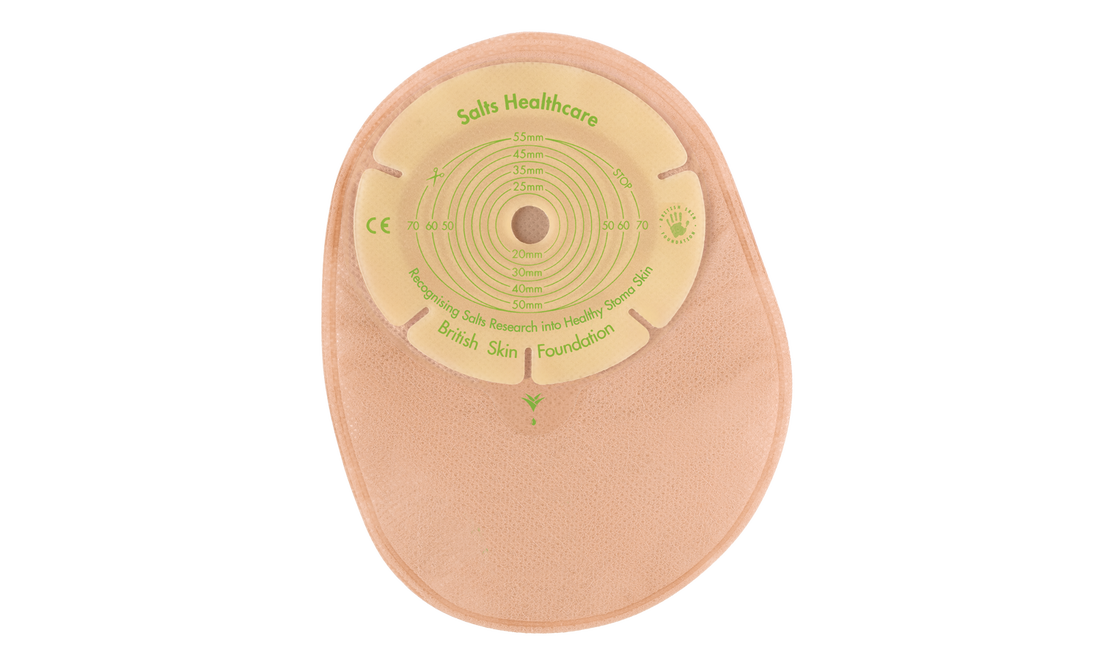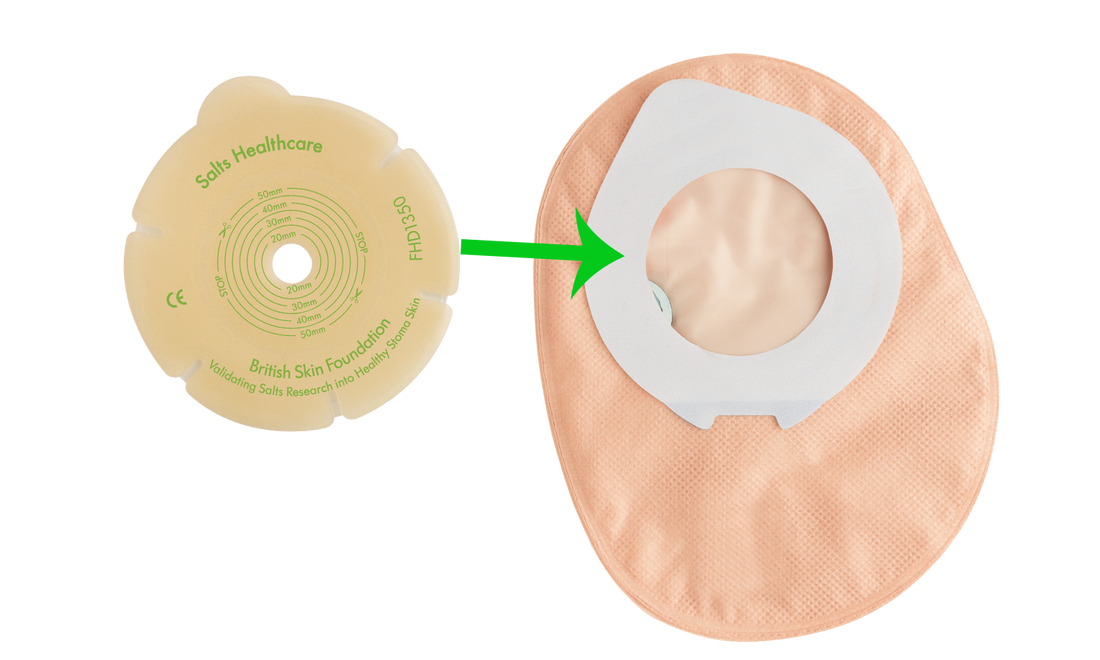Colostomy
|
A colostomy is formed by bringing part of the colon to the surface of the abdomen. There are two types of colostomy: end and loop. A colostomy is normally situated on the left-hand side of the body. It is usually flat to the abdomen, but may protrude slightly. It is pink/red in appearance, like the inside of the mouth, and is soft and moist to touch.
There is no sensation in the stoma and it is not painful. Intially, it is likely to be swollen and will take a few weeks to reduce in size. The output from a colostomy will normally be a formed stool but this may vary. There is no control over the passing of wind or faeces. |
|
End Colostomy
|
An end colostomy is formed when part of the colon and/or rectum is removed. The remaining bowel is brought out onto the surface of the abdomen. It may be temporary. This occurs when the diseased section of the colon is removed but it is not safe to rejoin the bowel at the same time (Hartman's procedure)
If the rectum and anus are removed the surgical procedure is called abdominoperineal excision of rectum (APER). The perineum will be closed and the stoma will be permanent. |
End Colostomy
|
Loop Colostomy
|
A loop colostomy is usually temporary and is normally created to divert faeces away from a surgical join or an obstruction in the colon. A loop of colon is brought to the surface of the abdomen and opened to form a stoma. It has a working end (proximal) which produces faeces and a non-working end (distal) which leads to the rectum and may produce mucus.
|
Loop Colostomy
|

